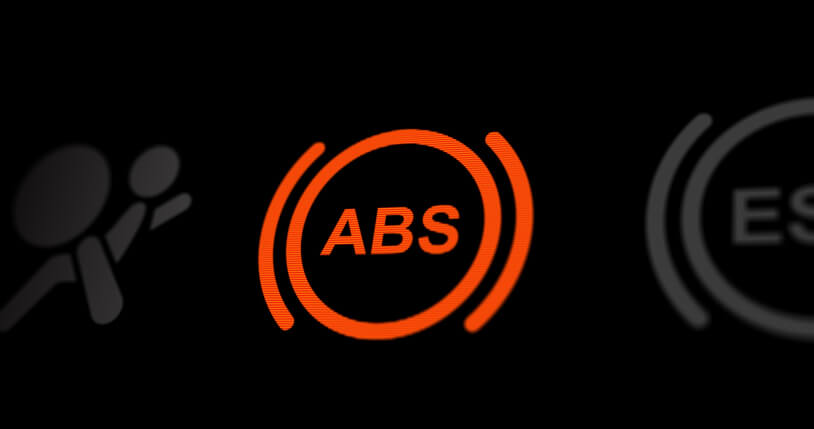Brake Feel 101: How Mechanics Evaluate Pedal Response During Inspections
Auto mechanic school explores how brakes have a way of “speaking” to a mechanic, not in words, but through the feel of the brake pedal. An experienced technician can learn a great deal simply by pressing the pedal and noticing whether it feels spongy, firm, or pulsating under their foot. During a vehicle inspection, evaluating pedal response is a key skill that helps spot underlying brake system issues.
In this post, we’ll explore how mechanics utilize both soft skills and technical expertise to assess brake feel, and how automotive students are trained to interpret this feedback to diagnose problems.
Why Brake Pedal Feel Matters During and After Auto Mechanic School
Your brake pedal is a link to the braking system, and any change in how it feels can be an early warning sign. A soft or “mushy” pedal often means air or moisture has entered the brake lines, reducing hydraulic pressure. A pedal that feels unusually hard can indicate a failing brake booster or a power-assist issue. If the pedal vibrates or pulses when stopping, it usually indicates warped rotors or an ABS problem.
These sensations aren’t minor quirks; they’re important safety signals. Skilled mechanics pay close attention to pedal feel during inspections because catching these small changes early can prevent major brake failures. Since the braking system is one of the most critical safety components in any vehicle, ensuring the pedal responds properly is essential to preventing accidents.
The Art and Science of Pedal Feel
Evaluating brake feel takes a mix of refined touch and solid automotive schools’ technical knowledge. Mechanics develop a “calibrated foot”, the ability to sense subtle changes in pedal resistance or travel. This intuitive feel comes from experience, but understanding why the pedal feels that way is all science. It requires knowing how each brake component works and how hydraulic pressure behaves.
A spongy pedal, for example, often indicates air in the brake lines or low fluid levels. A stiff pedal may indicate a failed vacuum booster. Skilled mechanics blend these instincts and technical insights: they not only sense that something is off, but they immediately understand the likely cause. This combination of tactile awareness and mechanical expertise enables fast and accurate diagnosis, and it’s a skill that every aspiring technician begins to develop during their training.
Common Brake Pedal Feel Issues and What They Mean
During a brake inspection or test drive, mechanics will check for a few telltale pedal responses. Here are some common pedal feel conditions:
Spongy or Soft Brake Pedal
A spongy brake pedal feels squishy and sinks too easily before the brakes engage. This typically indicates a problem with the hydraulic system. The most common causes are air in the brake lines or low brake fluid. Air compresses more than fluid, so the pedal loses firmness. Low fluid can result from a leak or worn brake pads, which draw more fluid into the callipers. Old, moisture-contaminated brake fluid or aging rubber hoses that expand under pressure can also create a soft feel. Whatever the cause, a spongy pedal means the brakes aren’t building pressure properly. A mechanic will look for leaks, worn components, or the need for a fluid flush. This is one of the first brake issues students learn to diagnose in automotive training.
Hard or Stiff Brake Pedal
A hard brake pedal requires excessive effort to press, usually because the power-assist system isn’t working. Modern cars rely on a vacuum-powered brake booster to facilitate easier braking. If the booster fails, or if a vacuum hose is cracked or disconnected, the pedal becomes extremely stiff. Issues with brake callipers or lines, such as a seized calliper piston or an internal blockage, can also cause high pedal resistance. Mechanics typically test the booster by comparing pedal feel with the engine off versus on; a functioning booster should make the pedal easier to press. A rock-hard pedal always calls for a check of the booster, vacuum lines, and callipers. Students in automotive school receive hands-on practice with these scenarios, enabling them to recognize the signs of a failing booster in real vehicles.

Pulsating or Vibrating Brake Pedal
A pulsating brake pedal feels like rapid thumping or vibration during braking, especially at moderate or high pressure. The most common cause is warped brake rotors. When rotors become uneven due to heat or wear, the brake pads grip harder on raised spots and apply less pressure to low spots, creating a pulsing sensation. ABS activation can also cause pedal vibration, but that should only happen during hard braking on slippery surfaces. If a driver notices vibration during normal stops, the mechanic will inspect the rotors for warping or thickness variation and check the ABS sensors if needed. Fixing the issue often means machining or replacing the rotors. In training, future mechanics learn how to distinguish between normal ABS pulsing and abnormal vibration from worn components, an important skill for accurate diagnosis.
Learning to Diagnose Pedal Feel in Training
Understanding what a “mushy” or “grabby” brake pedal means isn’t instinctive; it’s a skill developed through hands-on practice in automotive schools. That’s why real-world training is a core part of any strong automotive program. At our Montreal campus, students don’t just study brake theory in a textbook; they experience these issues directly in the shop.

Instructors control faults so that auto mechanic training students can feel the difference. Students also practice testing brake boosters by comparing pedal feel with the engine off and on, and they measure rotor thickness and run-out to understand how these factors relate to pedal pulsation. Throughout training, they’re encouraged to use all their senses, feel the pedal, listen for unusual brake noises, and visually inspect components.
By graduation, future mechanics have built the confidence to trust their pedal-feel instincts and support them with solid diagnostic skills. It’s the perfect demonstration of “practice makes perfect”: the more brake systems you inspect, the better you become at interpreting what the car is telling you.
From Classroom to Career: Putting Brake Feel Skills to Use
Mastering brake-feel assessment is a skill that translates directly into real-world success. Employers value technicians who can diagnose issues quickly and accurately, and being able to detect subtle changes in pedal feel is a major advantage. Spotting a slight sponginess and repairing a small leak before it becomes a serious failure not only protects the driver but also builds your reputation for quality workmanship.
These abilities complement essential soft skills, including attention to detail, problem-solving, and clearly explaining your findings to customers or colleagues. Together, they shape you into a well-rounded professional ready to handle the complexity of today’s vehicles.
Are you ready to start auto mechanic school?
Explore ATC Montreal’s program and begin developing the skills necessary for an automotive career.


